Explore the Art of the Bicycle at The Church in Sag Harbor
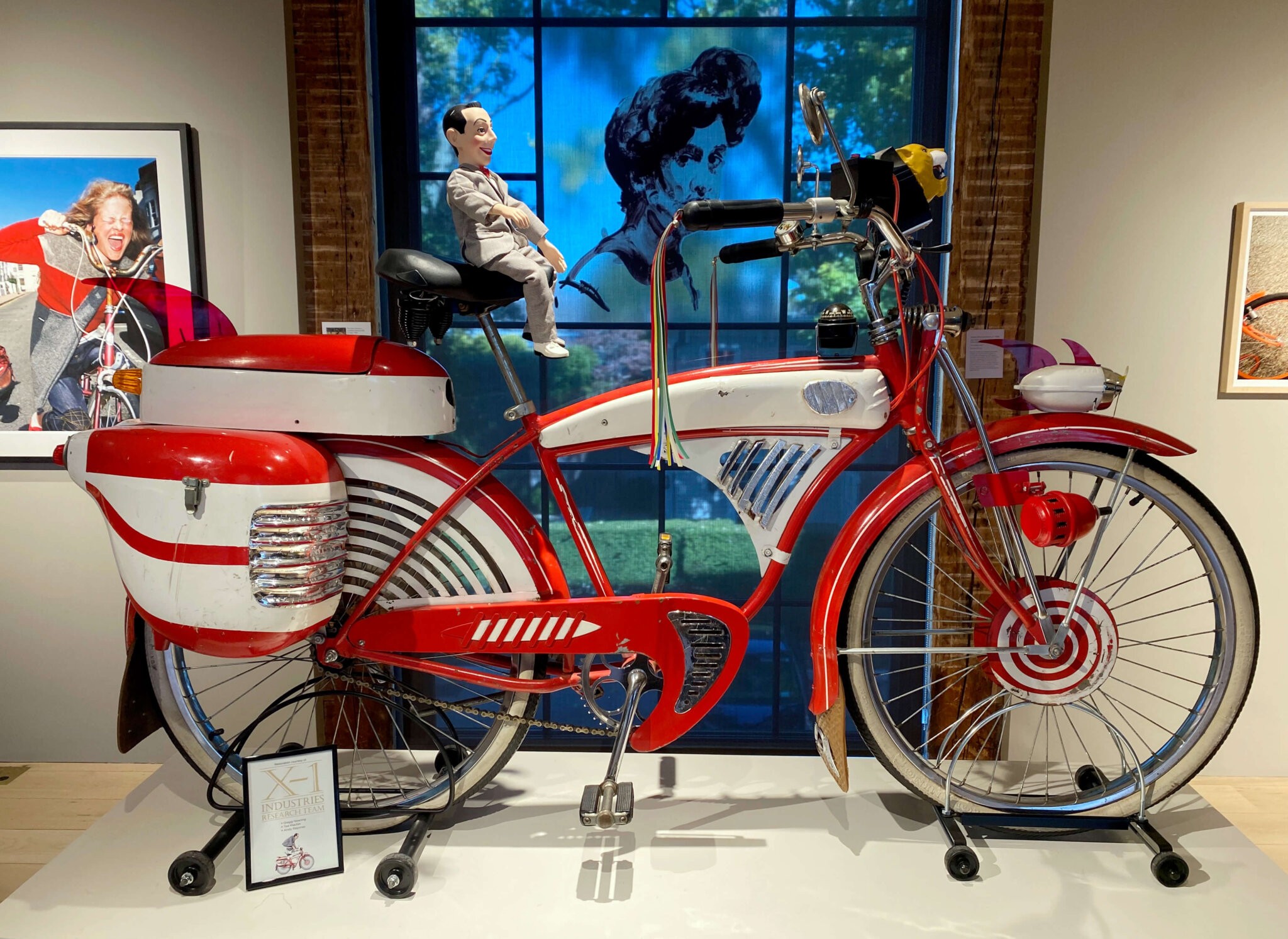
Bicycles have long been an integral part of the East End culture — just try driving around Sagaponack on a sunny summer day without being forced to stop or at the very least maneuver around roadside riders pedaling two-deep, while simultaneously dodging others coming in the opposite direction. Once we learn to ride, a skill which we never forget (it’s exactly like riding a bike), our bicycle becomes an extension of us. We are one with this two-wheeled marvel of human ingenuity and all the joy and freedom that come with it.
It is with this mindset that The Church in Sag Harbor launched their latest exhibition, RE:CYCLE — The Ubiquitous Bike, on October 8. The show, which features more than 20 unique, historic and stylish bicycles, including Pee-wee Herman’s iconic red Schwinn and a machine gun-mounted bike built before World War I, along with walls full of gorgeous bicycle-related photography, is on view through December 31, and it’s an absolute wonder to behold.
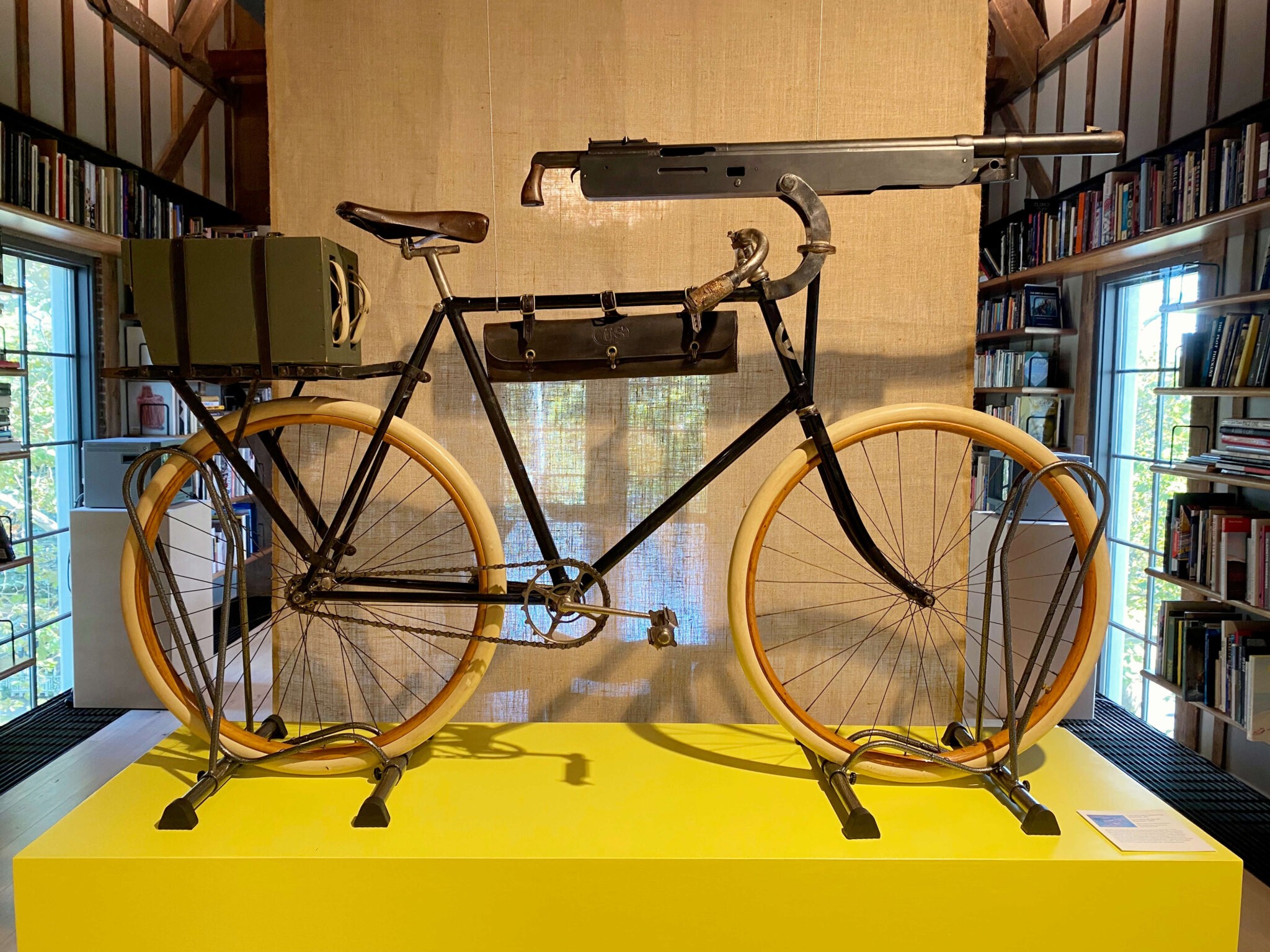
Who knew bicycles could be so fascinating? According to The Church chief curator Sara Cochrane, world-renowned painter, local resident and Church board member Eric Fischl brought the idea to the table after visiting the Bicycle Museum of America in New Bremen, Ohio.
“The last couple of autumns we’ve done a kind of a material culture show,” Cochran says, pointing to last fall’s Hand Made exhibition featuring G.E. Smith’s guitars and casts of artists’ hands. “Eric started to talk to us about bicycles and raving about them,” she adds, noting that the machine gun bicycle was the perennial favorite.
Once the bicycle idea was in place, Cochran says The Church Executive Director Sheri Pasquarella reached out to Jennifer Tripp of Magnum Photos and Tripp Projects and Mark Lubell, Executive Director of the International Center for Photography, about showing some incredible images on the walls.
Combining these photographs depicting the varied roles bicycles play in lives around the world, together with the actual physical objects, makes for an enlightening experience, even moving at times. And, for good measure, The Church has set up a replica of a classic Penny-farthing or High-wheel bike, with the giant front wheel, so visitors can sit atop the awkward ride and pedal in place to get a sense of what biking was like before the so-called “safety bicycles” of today, which are much less dangerous by comparison.
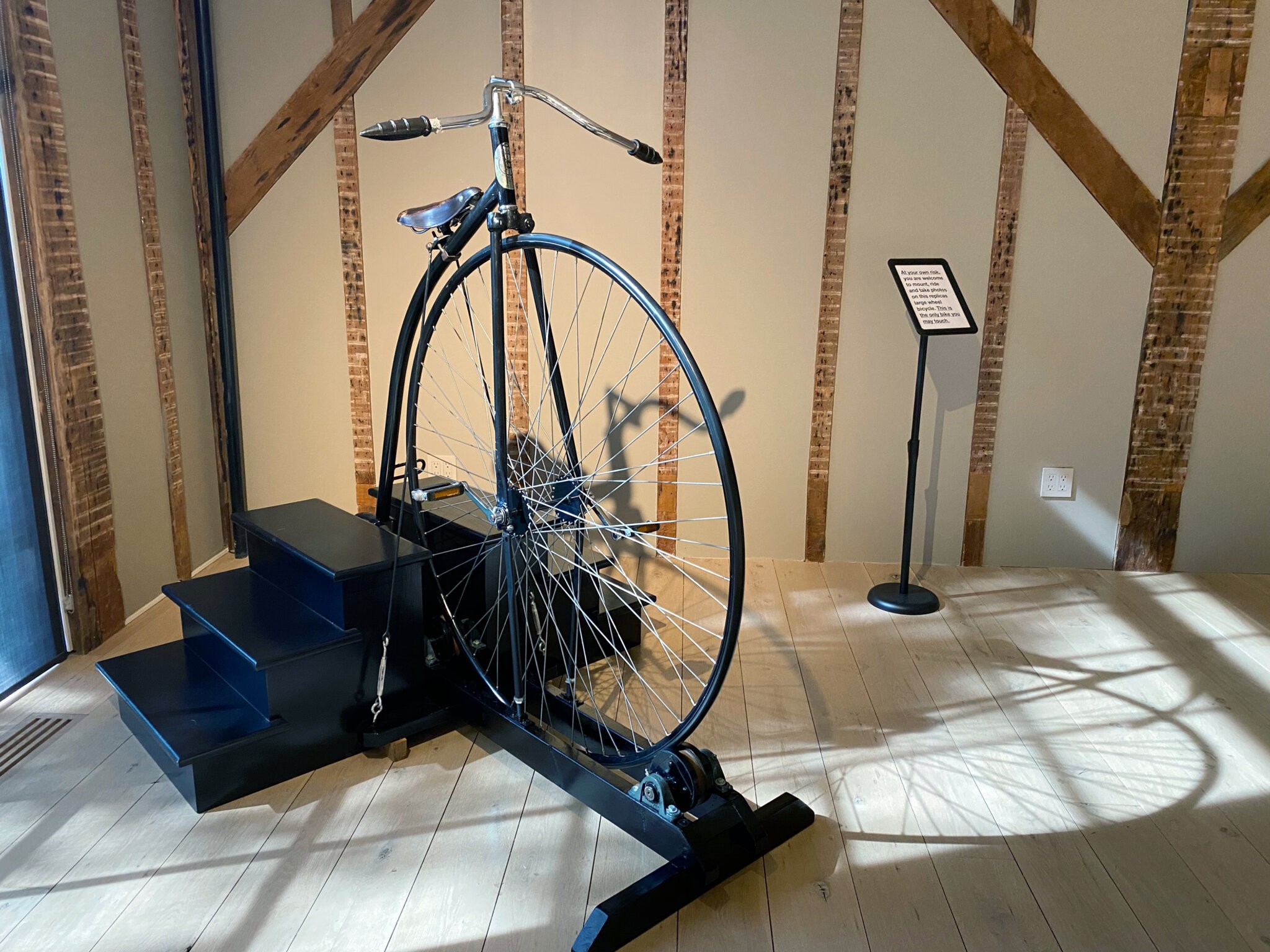
Among the most notable images on view is a stunningly composed 1932 black and white photograph, “Hyères, France,” of a blurred cyclist silhouette in motion — perfectly defining the “decisive moment” by Henri Cartier Bresson.
Another, “Memphis” by William Eggelston from 1969, puts a well-worn tricycle into a forced perspective, making it appear to tower over the homes and car in the background.
Calling Eggelston “the man who made color photography art,” Cochran explains, “He had a very interesting sense of perspective, humor and composition, and he often took everyday objects and made them seem like the most important thing in the world, and I think that this photo does it,” adding, “This is an incredibly important image in photographic history and we’re very lucky to have it.”
The physical bikes go back in history to one of the first bicycles — a beautiful red and gold replica of the original 1869 Dexter Boneshaker velocipede using what are essentially wheels from a horse-drawn carriage — and they continue through the 20th century and into the contemporary era, demonstrating fabulous design and innovation every step of the way.
Several bicycles take on design elements of motorcyles and rocket-age streamlining. Made in a beautiful sea-foam green, a Huffy Radio Bike from 1956 has a built-in radio and front light powered by a rear battery pack that sparked dangerously if it was ridden in the rain. “It speaks to that Post-War American optimism in technology,” Cochran says.
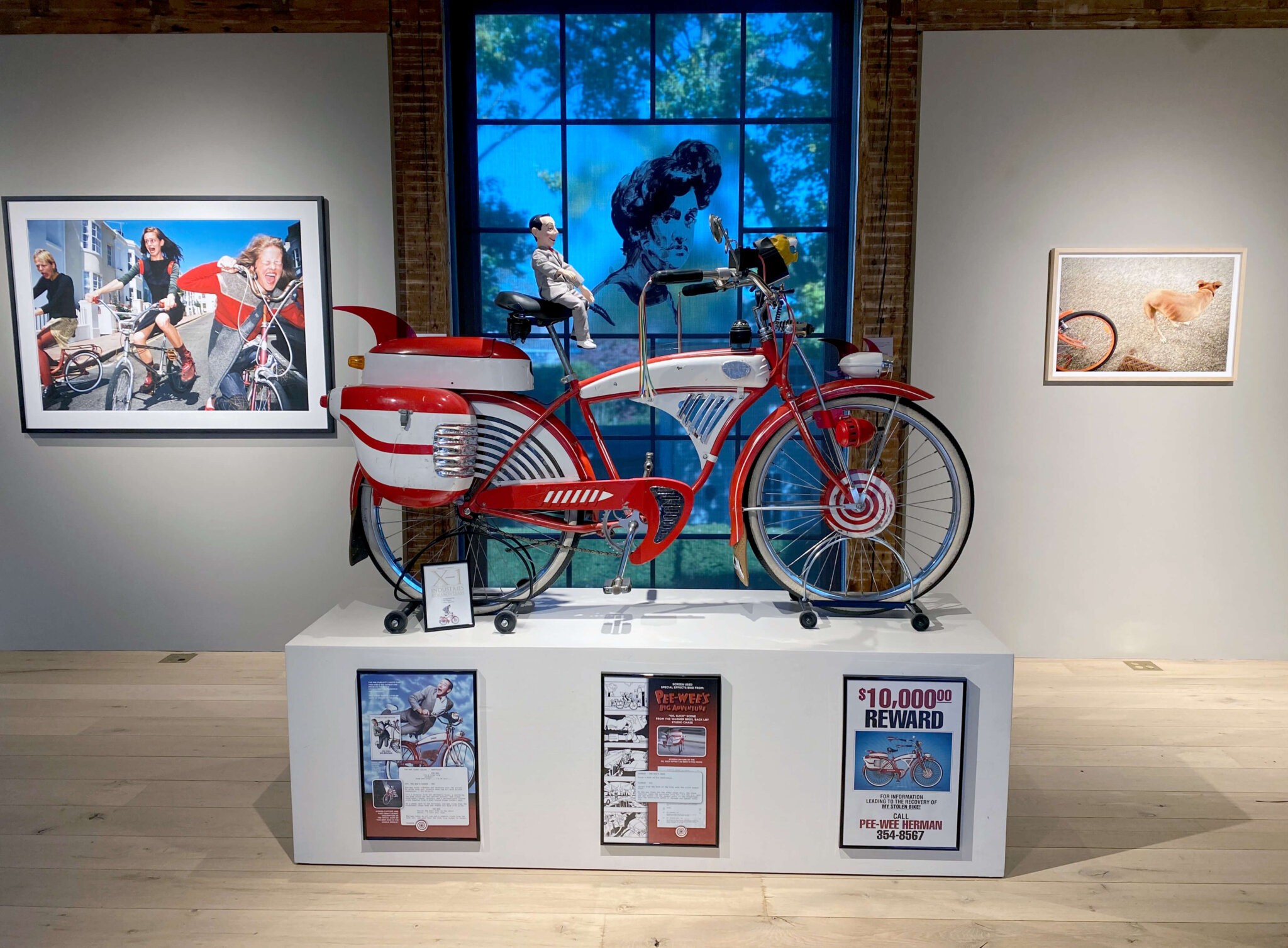
Though also quite different, the Huffy shares some of the motorcycle-inspired details with Pee-wee Herman’s modified red and white 1953 Schwinn DX Cruiser, which came as a late addition to the show. Fully customized by late Pee-wee actor Paul Reubens (who died July 30), down to the lion head front piece and red fins, the bicycle was the focal point of the character’s 1985 feature film, Pee-wee’s Big Adventure (directed by Tim Burton), which was all about him crossing the country in search of his stolen bike.
Of course, not every two-wheeler in RE:CYCLE — The Ubiquitous Bike is like Pee-wee’s beloved whip, which he wouldn’t sell for a hundred million, trillion, billion dollars. There are some rough but compelling examples in the bunch, such as the rusted, worn Wolff-American Ice Bicycle from 1901 with a front sled and back wheel with long nail-like spikes replacing the rubber tire. Another somewhat crusty invention on display is the absolutely bizarre 1917 Water Bicycle with hollow metal floats, pedals that turn a propeller, and a rudder attached to the handlebars.
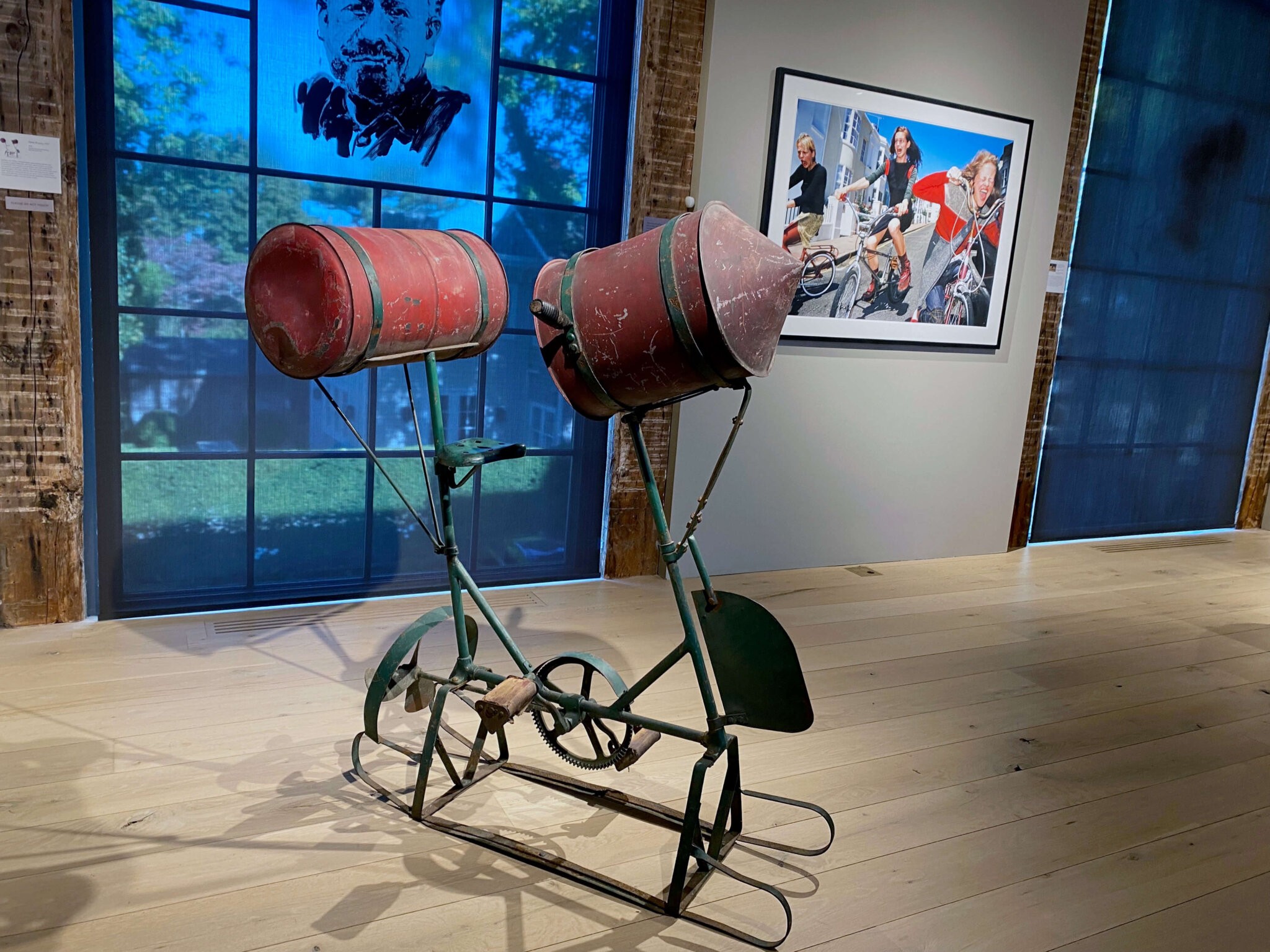
These are just a small number of the many exciting bicycles and photographs at The Church right now. They even have a couple of short film pieces and one bike that’s literally broken down into its basic elements and laid out on a table. The show is up until just before the new year, and it’s definitely worth a visit, whether you get there on foot, two wheels or four.
The Church is located at 48 Madison Street in Sag Harbor. Explore more, including complete checklists of all works, at thechurchsagharbor.org.



